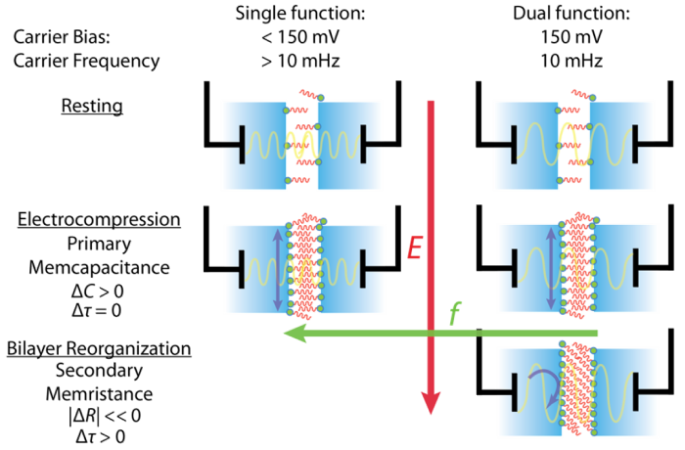
Standard singular memcapacitive behavior is observed in a droplet interface bilayer system at small amplitudes and “high” frequencies; behavior changes to a dual function at large amplitudes and “low” frequencies.
Scientific Achievement
Dynamic impedance spectroscopy revealed that structural reorganization drives the memory behavior of membranes formed from lipid bilayers by deconvoluting memristance from memcapacitance.
Significance and Impact
Understanding how a membranes’ dielectric properties can be tuned by electric stimulation or other chemical changes opens the door to new memory behaviors and multiplexed functionality from two-terminal devices.
Research Details
- Dynamic impedance spectroscopy was used to probe nonlinear charging behavior in lipid bilayers as a function of biasing amplitude and frequency.
- Time-constant analysis distinguished memory behavior resulting from simple geometric changes (e.g., bilayer thickening) from structural reorganization (e.g., alkyl chain restructuring) that results in a change of the dielectric properties of the system.
R.L. Sacci, H.L. Scott, Z. Liu, D. Bolmatov, B. Doughty, J. Katsaras, and C.P. Collier, Advanced Electronic Materials 8 2200121 (2022). DOI: 10.1002/aelm.202200121





